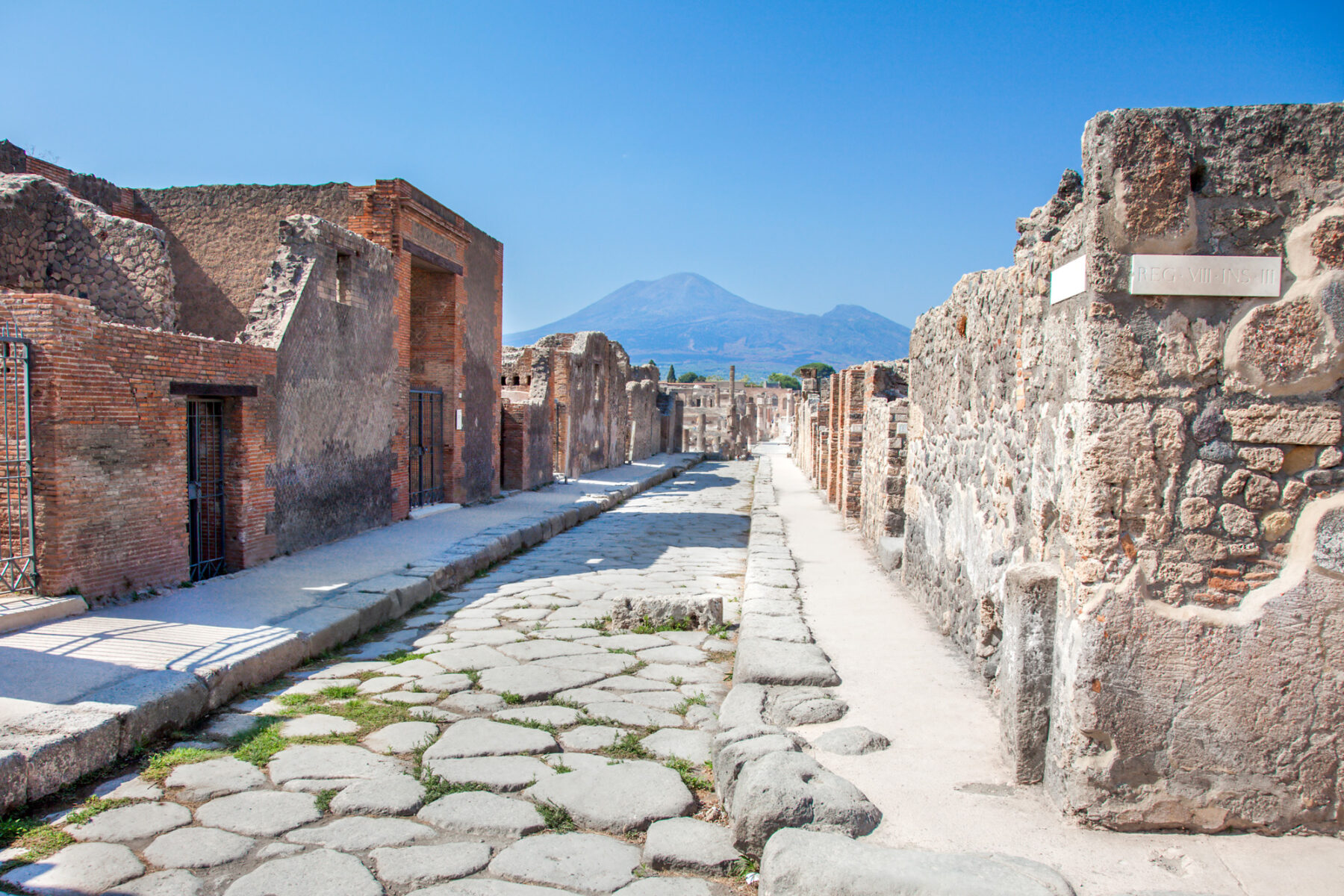
Bay of Naples Geography
With one of the world’s most famous volcanoes, miles of rugged coastline and some of Italy’s most fertile agricultural lands, the Bay of Naples is ideal for Geography studies.
To help highlight where your trip fits into the curriculum we’ve created this easy-to-use checklist.
Tectonic processes, landforms & hazards
Mount Vesuvius dominates the Bay of Naples, and is the only volcano on mainland Europe to have erupted in the last 100 years. The volcano is closely monitored by volcanologists ensuring the safety of residents living on its slopes and makes an excellent example of hazard management. Visit the UNESCO sites at Pompeii and Herculaneum, destroyed by the Vesuvius eruption of 79AD, to see how devastating a major volcanic eruption can be.
Weather processes & hazards
Naples has a Mediterranean climate, but what are the typical features? How does the coastal location influence the weather, and what impact does the towering Vesuvius have on weather patterns? What other factors influence the local climate?
Climate change
Visit small and large scale producers of agricultural produce to gain an understanding of the impacts of changing climate on their industry and the environment. Visit the coastal areas at Naples and Sorrento to see how the authorities are protecting these settlements from sea level rise.
Coastal processes, landforms & management
Study coastal processes including erosion and coastal management on the Amalfi Coast and the island of Capri in the Bay of Naples.
Geological processes & landforms
The volcanic landscapes and surrounds of Mount Vesuvius and the Valley of Hell, and the mountain and coastal environments of nearby Amalfi Coast and Capri give plenty of opportunity to study rocks and rock processes.
Urban change & growth
Italy has had civilised settlements for over 3,000 years. Naples offers a wealth of archaeological riches showing what life was like in ancient cities – how do these compare with modern cities?
Economic change
The province of Naples is fourth largest economy in Italy and the development and economic direction of the area has altered in recent years. Large industrial plants of state-owned companies have been located to Naples demonstrating the direct influence of national policies.
Global systems & global governance
This region of Italy has been a major recipient of EU funding, with investment into infrastructure, preservation of historic monuments and a range of projects aiming to boost the local economy. Evaluate the success of these projects with visits to sites like Naples’ port and the National Archaeological Museum.
Food resources
Nicknamed ‘’Campania Felix’ (fertile countryside) the rural environment which surrounds the Bay of Naples plays an important role in the agriculture of Italy. With fertile volcanic land, an abundance of water supply and an optimal climate, the area is intensively cultivated and ideal for farming. Key produce includes tomatoes, grapes, citrus fruits, wine and olive oil.